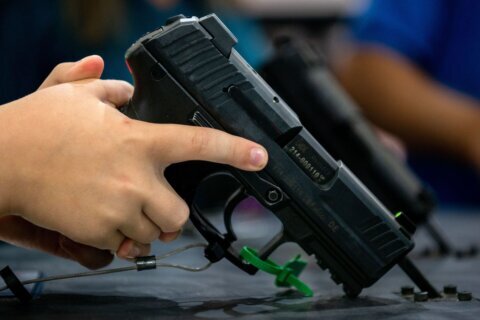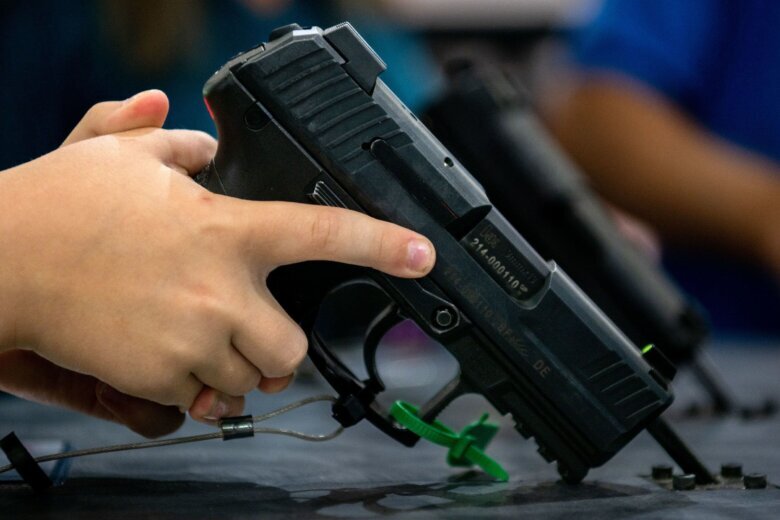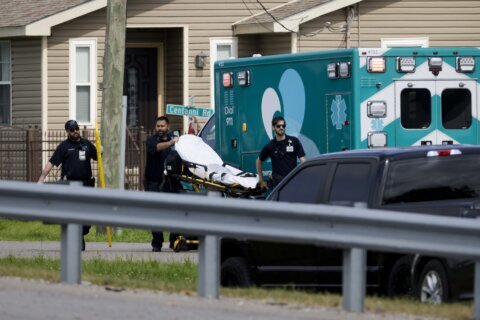
(CNN) — Sixty seconds might be all it takes to keep some kids safer around guns, a new study suggests.
The new report, published in the journal JAMA Pediatrics on Monday, explored how short safety videos can cause children to behave around firearms. Among more than 220 kids who participated in the study, those who watched a gun safety video were less likely to touch guns they found and pull the trigger – and more likely to tell an adult.
Guns are the leading cause of death for kids and teenagers in the United States. Nationwide, hundreds of cases have been recorded where kids accidentally shoot themselves or someone nearby — often causing serious injury or death. In over 90% of these cases, guns are left unlocked and loaded, and accidents occur when children play around with firearms or mistake them for toys.
“Over 2,500 kids die every year by guns,” said Brad Bushman, a professor of communication at the Ohio State University and one of the study’s authors. “It’s staggering.”
However, firearm safety can be tricky to study, according to Dr. Chris Rees, a physician and assistant professor of emergency medicine and pediatrics at Emory University who was not involved in the study. It’s difficult for researchers to measure gun violence in a controlled laboratory setting, so most research examines national patterns in firearm injury data instead.
As a result, most research measures correlation — whether an intervention is associated with less gun violence — and not causation — whether it caused less gun violence.
To circumvent that issue, researchers at the Ohio State University created a randomized control trial in which 226 kids ages 8 to 12 were randomly sorted into groups. At home, one group watched a one-minute gun safety video featuring the Ohio State University police chief, while the other watched a similar video on car safety.
“Guns are not toys and are not to be played with,” Chief Kimberly Spears-McNatt states in the video. “If a child finds a real gun, they should not pick it up or move it. Instead, find an adult and tell them where it is located.”
Since the kids’ familiarity with gun safety was similar before watching the video, changes in how they behaved could be tied more closely to takeaways from the safety video.
“There’s no other experimental study on gun safety … at least that we could find,” said Bushman. “This is the only one ever conducted.”
One week later, the kids stopped by the laboratory. In a “two-by-two” setup, kids within each group also watched clips from a PG-rated violent movie with or without guns digitally edited out. According to Bushman, the film clips were intended to act as a “trigger,” while also testing the researchers’ hypothesis that movies with guns could be a “risk factor” that makes kids more “aggressive” around firearms.
Then, in pairs, the kids were brought into another room filled with games and toys, like Jenga, foam swords, and Legos, and the adults left.
Hidden in the bottom drawer of a file cabinet in the playroom, however, were two real — but disabled — 9 mm handguns.
According to Bushman, that scenario resembles cases where adults don’t lock and secure their household firearms— they just assume that kids won’t find them.
While the children weren’t told about the guns, 96% of the kids still found them within 20 minutes. Through hidden cameras and sensors on the guns, the researchers in the next room tracked how the kids reacted.
“Kids are curious,“ said Dr. Eric Fleegler, an associate professor of pediatrics and emergency medicine at Harvard Medical School, who was not involved in the study. “Kids will find things. They have a capacity to sniff things out.”
Children who had seen the gun safety video were 28% less likely to touch the gun and held the gun for less than half the time if they did touch it. They were also over 20% less likely to pull the trigger, and those who did pulled the trigger fewer times.
“That’s an impressive intervention,” Fleegler added. “These are the types of interventions that can be delivered on a mass scale.”
The study also found that young boys pulled the trigger and handled the guns longer than girls, while pointing the gun at themselves or their partner more often. However, based on surveys of the kids, children who had taken a gun safety course before, lived in homes with guns, or reported disliking firearms held the gun and pulled the trigger less.
The researchers did not find that watching violent film clips with guns changed how kids behaved around firearms in real-life.
For Bushman, the impact of a short gun safety video watched a week before kids arrived at the lab is “really encouraging.” He attributes the video’s success to its use of an authority figure — a police chief in uniform — to win kids’ respect.
However, while watching the gun safety video improved how children behaved around the hidden firearms, over half still touched the gun. And less than a quarter overall told an adult.
“It’s really, really important not to lose sight of the fact that [the videos] did not eliminate the risk,” Fleegler said. “That is fantastic that we have reduced the risk, but by no means have we eliminated it.”
But some experts think that exposing children to violent movies right before encountering a firearm might have artificially inflated the high rates at which children picked up the firearms.
“I don’t know that I would have done that,” Rees said. “I don’t think a practical component in a real world application would be expose them to some sort of violent media to prime them. The importance of any study is how you translate this to real life.”
Still, Fleegler is optimistic. Short videos from authority figures, he said, could be “an incredibly important potential intervention” to protect children from hurting themselves.
Bushman also recommends that gun-owning parents take appropriate measures to lock and secure their weapons.
“If you own a gun, that’s your right – but lock it up,” he said. “Unload your gun, put it in a lockbox and store the ammunition separately. Because kids are very curious, and adults drastically underestimate children’s ability to find firearms.”
The-CNN-Wire
™ & © 2023 Cable News Network, Inc., a Warner Bros. Discovery Company. All rights reserved.








